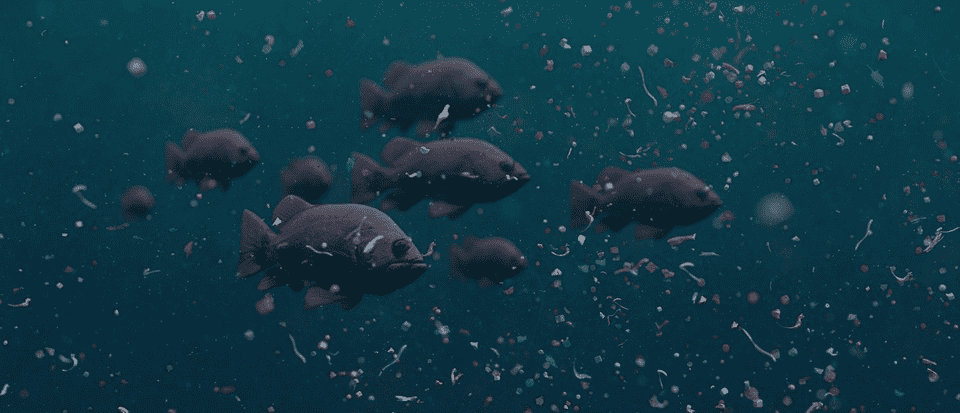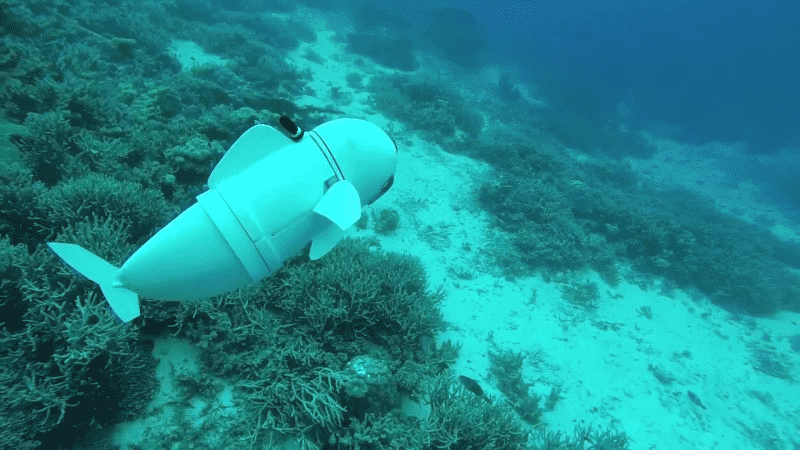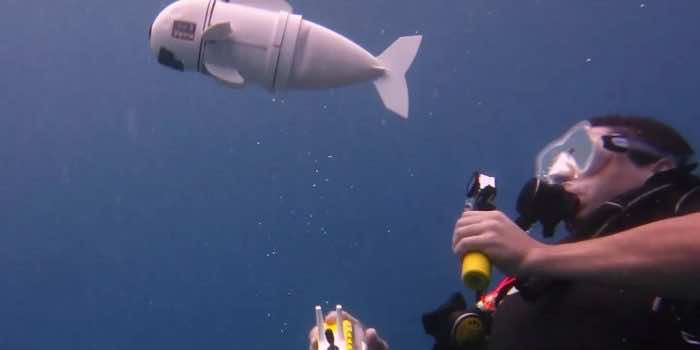According to estimates, around 5 to 13 billion metric tonnes of the plastic plunge into the oceans each year, thereby causing plastic pollution. In an attempt to reduce plastic pollution in the oceans, which is also fatal to aquatic life, a team of engineers at Sichuan University in China has designed a robotic fish that can play its role in eliminating waste from the oceans. This incredible robotic fish, which is just half an inch in length, swims throughout the water and keeps grabbing the pieces of plastic that come in its way.

Engineers have designed it in such a way that makes it easy to touch down in those parts of the water that would be otherwise inaccessible, and, in this way, the plastic waste can be assimilated smoothly. It uses its flaps to swim through the water, but primarily, the infrared light technology is the one that keeps it moving. When light is flickered onto its tail, it bends across the water layers, and when the light is switched off, it again comes back to its position. Hence, this phenomenon keeps it swimming throughout the water.

As per Professor Xinxing Zhang, who is the leader of this project as well, “The proof-of-concept robot is demonstrated to emphasize its maximum swimming speed of 2.67 body length per second. Its speed is comparable to that of plankton, representing the outperformance of most artificial soft robots. Furthermore, the robot can stably absorb pollutants and recover its robustness and functionality even when damaged.”
A study conducted by the scientists at Kyushu University revealed a shocking detail: that approximately 24 trillion pieces of microplastics are contained in our oceans, and this research was based on the time frame as of October 2021. We can analyze from these facts how fatal these microplastics may prove to aquatic life, thus slowly damaging the marine environment.

Let’s talk about the composition of this incredible robotic fish. It is made from the versatile material known as “the mother of pearls”, which resides in the “clam shells”. The material encompasses different layers, from calcium carbonate composites to silk protein fillers on the opposite sides. Nanosheets made from “cyclic sugar molecules” are fabricated onto polyurethane latex and then the layers are folded onto each other through these sheets so that the debris can easily be contained inside the fish.

Moreover, the nanosheets can be renewed after being opened up for the extraction of debris. They can again be put together, and in this way, the fish is all set to perform its role again. According to Professor Zhang, “This study breaks the mutual exclusivity of functional execution and fast locomotion. We anticipate our nanostructural design will offer an effective extended path to other integrated robots that require multifunction integration. “


